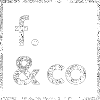–
Losing it : creativity and craziness in contemporary social science
Why talk about craziness?
The notion that economists and managers should have something to say about creative processes is slowly making its way in both scientific and artistic milieus. Although Frey & Pommerehne warned scholars in 1989 that "these are not questions for economists to answer", it has become reasonable to consider that the case has been made for an exploration of the elements in and around creativity by economics and administration academics. The strand of literature that explores issues related to creation, even when limiting the review to business-related areas of expertise, is vast, encompassing economics of culture (Towse, 2003, 2005 ; Ginsburgh & Throsby, 2005), creative cities (Landry, 2008 ; Cohendet, Grandadam & Simon, 2009 ; Florida, 2004), creative individuals (Amabile, 1988 ; Arvidsson, 2007), all the way to organizational issues including notions related to communities (Lave & Wenger, 1991 ; Wenger, McDermott & Snyder 2002) or organizational learning (Argyris & Schön, 1978 ; Cohen & Levinthal, 1991). Creativity as a research field has thus grown increasingly popular over the past few years, mostly as an outgrowth of innovation and technology economics.
While this sum of work on creative processes largely justifies questions pertaining to creativity economics per se, it also leaves many peripheral areas unexplored, unexploited. At the crossroads of sociology, psychology and economics, we find that the study of creativity comes down to the idea that individuals and collectives are able to produce artefacts – products, concepts, rules, etc. – that are new. To do so, they must consider what exists, and move towards new epistemologies that they will then try to diffuse progressively. The new artefacts may (or may not) make their way into generally accepted meanings and practices, and if it does, the creative behaviour will be considered innovative. Although authors such as Cohendet, Grandadam & Simon (2009) have build an elegant and simple model of creativity mobilizing all strata of society – from the creative underground to the productive upperground through communitarian middlegrounds – we want to describe how the so-called underground interacts with the rest of this theoretical construction, how it perceives itself, and how it defines its actions with regards to the rational, goal-oriented activities of the upperground. We want to focus on this quest for "abnormalcy" that is inherent and drives creative behaviours, and examine how creative individuals and creative collectives live through their deviance as they move forward.
We argue that creative individuals belonging to the underground can also be understood as being distributed in a three-tier pattern. We try to model the underground in order to show that individuals can be situated relatively to a core of shared values, and that it is this peripherality that makes the creative. In short, creative individuals must be deviants, or outsiders (Becker, 1997) : only those voluntarily or involuntarily active outside the shared meanings that make up normalcy are able to provoke these meanings, and transform normalcy through a process we call creativity.
Hence, using Hans Joas (1992)'s "three metaphors", we define creativity as any action – expression, production, revolution – which alters the shared meanings of the majority. This alteration can only be achieved by those able to stir and renew this meanings : using Henri Bergson's formula in its original French expression, creativity is ce qui dérange – an idea locating it somewhere between "to bother" and "to derange". This notion guides us to explore how far from the norm one should be in order to succeed. This proposal is an attempt to define the determinants of successful creativity, which could be illustrated by several case studies.
Underground, craziness and inverted u-shapes
The underground has been defined in various manners by scholars. While for Arvidsson (2007), it designates all "unsalaried processes of productive cooperation", Frey (2001) reduces it to expressions "confined to particular art forms suitable for clandestine presentation".
Assume that we define social beings and their relationship to creation using a three-tier configuration. The top tier includes those we define as being "unable to make society". They are "clinically crazy", with no ability to follow (or create) rules, to interact with institutions. They are beyond the realm of our interest (although one sub-question would be, is craziness and the internment it implies follow normative, or humanist impulses ?), and thus are of limited interest for scholars in economics and administration sciences.
The third tier consists of the "uncreatives". Bureaucrats, unqualified workers, accountants. These constitute the "normal" bassin out of which the second tier feeds itself. Third tier individuals, when prompted, are able to prove creative daily, through spotting defects and having ideas as to how to improve a limited realm of significance. Notions of absorptive and explorative capacities, such as those put forward by Cohen & Levinthal (1991) or Aoki (1990) are here central to their activities. Hence, third-tier individuals are to be "managed", by setting up participative management procedures, ideas laboratories, suggestion boxes, 2.0-like tools, etc.
Between these extremes lies the second tier, which consists of highly creative individuals. Leaving aside the chicken-and-egg considerations and simply considering that there is an implicit relationship between craziness / deviance and creativity, one may find a strictly positive relationship. If you are crazy (within this second tier), you will be creative (necessarily). If you are creative, you will be crazy. Our insight is that there is an inverted U-shaped relationship starting from the begining of the second tier to the border with the third tier. If you are little crazy, you will be little creative. Then as you move towards more crazy, you will be able to bridge the gap between the incomprehensible world of the top tier and that of the first tier. You will eventually reach a sort of "maximum", where you will find truly revolutionary individuals (A. McQueen, F. Nietzsche, G. Nerval, T. Burton, etc.). This "maximum" is 1) theoretical and 2) temporary. The model is dynamic, so that people move up and down the "craziness" ladder and may be at that subtle maximal point but for a brief moment.
With the help of Brooke Rutherford.


